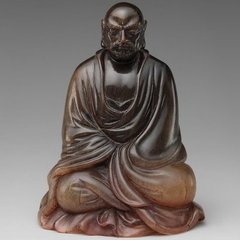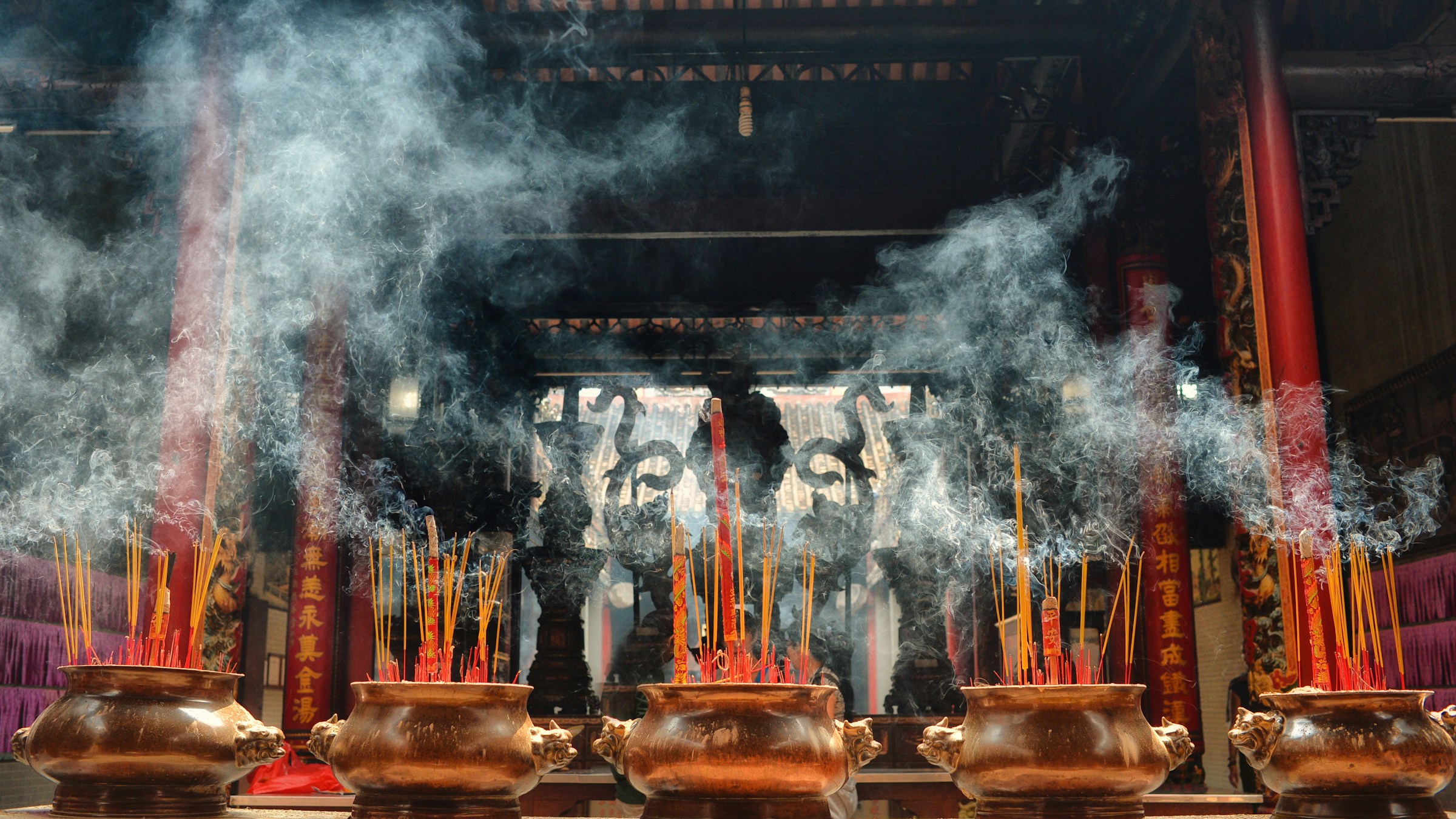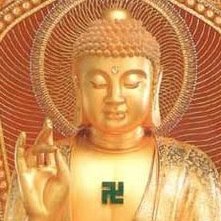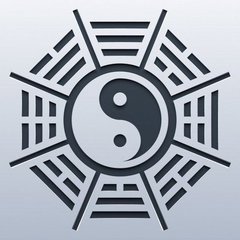-
Content count
79 -
Joined
-
Last visited
About Piyadasi
-
Rank
Dao Bum
Recent Profile Visitors
2,312 profile views
-

Commiting to a system: Damo Mitchell vs Adam Mizner
Piyadasi replied to tsuki's topic in Systems and Teachers of
Yeah, the teacher was Shen Hongxun, he did the stuff Damo was talking about. -

Commiting to a system: Damo Mitchell vs Adam Mizner
Piyadasi replied to tsuki's topic in Systems and Teachers of
I think you're confusing Huang Sheng Shyan with Shen Hongxun here. -

On the nature and utility of 'goal posts' in meditative and energetic practice
Piyadasi replied to Wilhelm's topic in General Discussion
Great point about him having no teacher! What does it mean when you say karma starts to unravel when Spirit is touched? Isn't that kind of what life on this plane is already? Is it a 'speeding up' (what does that even mean) or is there a different mechanic there? -

On the nature and utility of 'goal posts' in meditative and energetic practice
Piyadasi replied to Wilhelm's topic in General Discussion
Hmm... that is very unfortunate to see. The thing is, this guy is a legitimate high level master. I can imagine 3 things at play: 1. The accusations are there to tear him down. This seems somewhat unlikely seeing just how much has been leveled against him, it seems improbable that all are fake, but it's not impossible. There is a story in the Pali Canon, where enemies of the Buddha hire a prostitute to visit him and the monks at regular periods for some length of time. Then they kill her and bury her on monastery grounds, which later they mean to uncover and accuse the Buddha not only of consorting with prostitutes, but going so far as to kill her. Clearly people are willing to go to extreme lengths to tear down those who are very high up in comparison to them... I don't think it's 100% impossible that this the case. 2. They are at least legit to some extent or another and something went extremely wrong at his level of practice that caused a massive spiral down into hell. 3. They are at least legit to some extent or another and some kind of intensely bad karma is playing itself out, as freeform has mentioned multiple times can happen at stages when there is contact with Spirit. The last two are not an excuse for anything, really just making conversation. In any case it's very sad to see. It is kind of crazy to think about it though, the fact that some bum from a Nepalese village has such a pervasive influence because of his 'power' - whatever it's quality - that he can generate all kinds of reactions not only in his entire country, but also all over across the globe, among people he'll likely never even meet... Just highlights to me the extreme responsibility / weight that high level spiritual practice carries with itself. Sorry for the classic thread derail posts - was curious for any news around this person. -

On the nature and utility of 'goal posts' in meditative and energetic practice
Piyadasi replied to Wilhelm's topic in General Discussion
Just to derail the thread a bit more... What's the update for the "Buddha Boy"? -
I think an interesting dynamic is that this can happen even when the "leader" actively opposes some of these things or if they have a more nuanced perspective on certain things, like say effectiveness of methods (let's be real most are crap) - the nuance can escape students ("only ours is effective, nothing else"). People will project all sorts of things to you, even in daily life, but especially if you have power, respect and authority. If you can do some things that are legitimately very unusual or rare, then the projections can also spiral in proportion to that... I think these cult-like behaviors are just based on very human psychological processes, some of which come more from students than from the leaders. It is tricky business, but I have realized that just as important it is to look at the group, the people running it and all that on the outside, it is very important to look at our own motivations and projections on the inside. Just some reflections, not trying to absolve any cult-leader here!
-
Hindu and Buddhist has little meaning in the early period, considering many saints are equally venerated in both Hindu and Buddhist traditions, regardless of where and what they studied, such as Saraha, Virupa, Kanhapa or Matsyendranath. My points were based partly on the fact that things such as mantras, mudras and rituals, even subtle body practices, basically some of the main features of Tantra, demonstrably existed way before Padmasambhava, in both Buddhist and Hindu traditions. As for Vajrayana in the more close definition, I would argue that before something is written down and enters main stream institutionalized education, it has a long tradition of oral lineage transmission behind it. It is also a tradition that positions itself in opposition to the mainstream, both in society and spirituality, constantly. I'm mostly talking about the Vajrayana of the early Mahasiddhas and the early practice lineages of Nyingma and Kagyu. It is true also, that especially in it's transmission into Tibet, universities and missions sponsored by the wealthy played a big role, no argument on that. But actually often these were not very 'tantric' and there was a lot of conflict in how to synthesize the lines coming from those missions and the 'grassroots' lines coming from lay yogin practitioners as Apech has already alluded to. It is certainly a great feat of scholarly magic that these two have been merged into one and became the Vajrayana we know today I'm not a scholar and in fact I have thoroughly exhausted all desire to engage in historical debate, so I'm sure I don't live up to scholarly standards. I have read a scholarly book some years ago I think it was called Origins of Yoga and Tantra, it makes similar points that I do, traces the origins with a historians mind - though usually concludes with 'well it's really hard to know when from the historical record' - if you really want something to add to your reading list. I admit I could not be bothered to read something like that again! I really only wanted to make the point about the meaning of Vajra, so with this post I'll bow out of the historical discussion 🙏
-
Yes, this is the understanding that one might gain after a 5 minute read of the Wikipedia article (on Padmasambhava specifically). The fact is that even your article says, that Tantra was incorporated into the Buddhist universities, meaning that it did not originate there. Where did they incorporate it from? From the lay mendicant tradition that I described earlier. By the time you have it in the universities it has been an ongoing transmission for 2-3 centuries. Many of the revered masters of these traditions who lived by the time Tantra was well-known in universities actually left or were kicked out of the university orthodoxy. If they even studied there at all. Which failed. There were several waves of transmission, it was a mix of invitations from India by the wealthy and also Tibetans seeking out Indian masters, travelling and practicing. It took a few centuries for it to be completed. The various Nyingma and early Kagyu lineages were all "grassroots". The Tibetan transmission is also not how Vajrayana begins, so it's not so relevant to it's origin. Really... you think that's all there is to it? The goal of a tradition that has been going on in India and some other places for multiple centuries is for it to subdue local cults in another country? If you're going to be talking about other traditions, at least read something other than Taoist Texts and Wikipedia articles...
-
I think it's a great metaphor. But I can offer you no concrete evidence to 'prove' that this is the definite meaning. In fact I'm sure it's not the only layer of meaning, you can read about many layers of interpretation with a quick search online. I just wanted to offer one perspective that is not that removed in terms of symbology and is closely tied to the word itself. I think your perspective on Vajrayana is a little flawed though. I don't know how familiar you are with it's history, but it started as anything but what we'd call a religion. It was not propagated by priests or the priestly class (Brahmins) or even the monastic hierarchy, quite the opposite it was a secret, oral transmission of practice and condensed teachings for mainly lay practitioners, that had little to no power in society and in fact were against societal norms in most ways. There wasn't much of a room for 'believer' in these traditions, since the practices demanded much more than what is expected of believers. Lay cultivators without churches or fancy robes also had less need to harness other people's power and resources in return for a simple system that made daily life more bearable for the average believer. Though I do agree it turned into something quite different in later stages Well, cultivation might have remained, but a whole layer of 'religion' was also established. Well I'd guess they'd cultivate what most of us try to? Our being with it's many different layers and our connection to something higher.
-
I'm not sure, but if a culture has a common understanding and a tale of sorts (preserved to this day) attached to certain words, why would a master have to write a Sutra to explain the meaning of something that everyone around him understood anyways? If you have the association in your head between lightning and diamond, and grew up with your mom telling you that on rare occasions the king of the gods strikes some common cow dung to create the amazing and precious diamond, would you be confused as to what meaning is implied by this term? You probably don't understand what this implies spiritually, but as you go train with your master, and advance on your path, it becomes clearer and clearer what is meant. I think this is a different way of thinking than what is common nowadays, but this sort of symbolic thinking is prevalent in all of human history before the modern day. Certainly dissecting the linguistic origin and the "Proto-Indo-European root" of the word played little part in the average Bengali (or Tibetan) peasant cultivator's life in 900CE.
-
I mean honestly... we barely are In my native tongue, the word for 'fortress' and the word 'waits' is the exact same, written and pronounced the same. I'm sure I could think of others, but this is probably #1 one that would jump to mind for most people in my country. - Regardless of that, even by your reasoning there is a reason why Vajra (in a spiritual context, which is pretty much it's exclusive use) means both thunder/lightning and diamond. The reason is actually that ancient Indians believed that when lightning strikes the earth, under certain conditions, diamonds can form (apparently this is not wholly inaccurate according to modern science). Even in modern India people have a version of this tale, but it involves cow dungs instead! So more properly Vajra in the context of Vajrayana actually means the process by which the Unstoppable and transcendent (lightning) strikes the mundane, the potential (earth) to create the Indestructible and purified (diamond). It is the coming together of Pure Yang and Pure Yin. That is the Vajra Path. Depending on what meaning you want to emphasize, whether it's the transcendent force or the whole process or the result or the fundamental reality, this is why these images are tied to it. Even in terms of it's meaning as a weapon and in the Vedic context, it is the weapon of Indra of the thunderbolt hand, king of the gods, who uses it to slay the Serpent of the Underworld (whose Sanskrit name literally translates to 'Obstacle'). In some tales it is forged from the spine (and bones) of a Rigvedic sage who sacrifices himself through yoga and is used to kill the Dragon who obscures the free-flow of all the sacred rivers. That last sentence alone should ring some bells for anyone who knows anything about the later stages of Indian Tantra
-
(Skip this long post if you don't care about Vajrayana / Tibetan Buddhism at all!) Visualization and Tantric practice often get mentioned together. Unsavory as I find this topic, I'll add a few points I rarely see mentioned. If you're familiar with Tibetan Buddhism, you might be familiar with the "greatest Tibetan saint" Milarepa. He has a work attributed to him commonly called The Hundred Thousand Songs of Milarepa. I believe it is a great book/collection, and rather revered in Tibet. It is long, more than 60 chapters I think. In it the word "visualization" appears maybe three times. The words "nadi-prana path" appear at least once if not more almost every chapter, the words nadi, prana and bindu also appear separately a lot more. In fact it's almost all he talks about. Samadhi and things like "nature of the mind" is also frequently mentioned. Yogic conduct is also emphasized. The other lineage biographies of Marpa, Rechungpa or even Naropa and Tilopa are much the same. If you read the early writings of the 84 mahasiddhas, like Saraha for example, or other dohas, you never see the words for visualization or imagination. In fact, most of them, all they talk about is single pointed meditation or "resting in the nature of the mind beyond conceptualization". Milarepa's main practice was generating and developing the blazing fire of Tummo. One of the signs of basic success at this practice is things like being able to walk around in the Tibetan winter in a single cotton cloth because of the heat, or not needing to eat or sleep much because of the inner nourishment from the development of the subtle body and of the Amrita. The visualizer camp is massive. So many people do the practice like that, a huge pool of practitioners. Has anyone been able to produce anything like that, especially in the West? The only guy I know about who can reliably and publicly producing anything even remotely similar is Wim Hof. He undoubtedly bastardized the teachings, but he bastardized them in the "right" way hilariously enough, that is with/towards the body. The only guy who can produce anything like results, doesn't use imagination, he uses breath and body mechanics. I'm not saying he represents tantric practice, definitely not... but maybe something to consider. Another point with Vajrayana is the history of why there is even visualization in the tradition in the first place. I wonder if people are aware of the history of this at all? Visualization came into play basically only because when Vajrayana pratice was becoming more popular and entering the mainstream, it came from a lineage of wandering lay yogis into a tradition of scholarly monasticism. Most of the tantric rituals were completely against norm and monastic vows, involving things like alcohol, strange ways of acting, or contact with the opposite sex, all completely unacceptable by both society and monastic rules. (That was kind of the point.) So one day, some genius had the idea: what if instead of doing the thing we instead visualize/imagine the thing, ie. ritual sex with a consort, or meat and alcohol usage in ritual feasts. No action, no breaking of monastic vows, and we still get all the benefit right? Cause it's all mind anyway or something. The rest is history... Just some food for thought.
-
Dogs barking. Clowns honking. Both of you made an embarrassment of yourselves. Stop it. This is not how someone on the path should conduct themselves.
-

Anchoring the breath - regarding attention
Piyadasi replied to -_sometimes's topic in Daoist Discussion
I think this is great advice, I've been noticing a smaller version of this in daily training. If it's gone really well and I feel great, sometimes that energy will shoot straight into that sort of stimulation seeking, excitement mindset... and then all that great progress gets lost or diminished... Have to be careful to stay solid, sunk and stable. 🙏 -

Anchoring the breath - regarding attention
Piyadasi replied to -_sometimes's topic in Daoist Discussion
Yeah, whole system. I see your point... but it's hard to say, could be individual. I would certainly advise anyone to cover all bases with a complete system though!





.thumb.jpeg.611f83584012f7d113169af2a4fd9318.jpeg)



